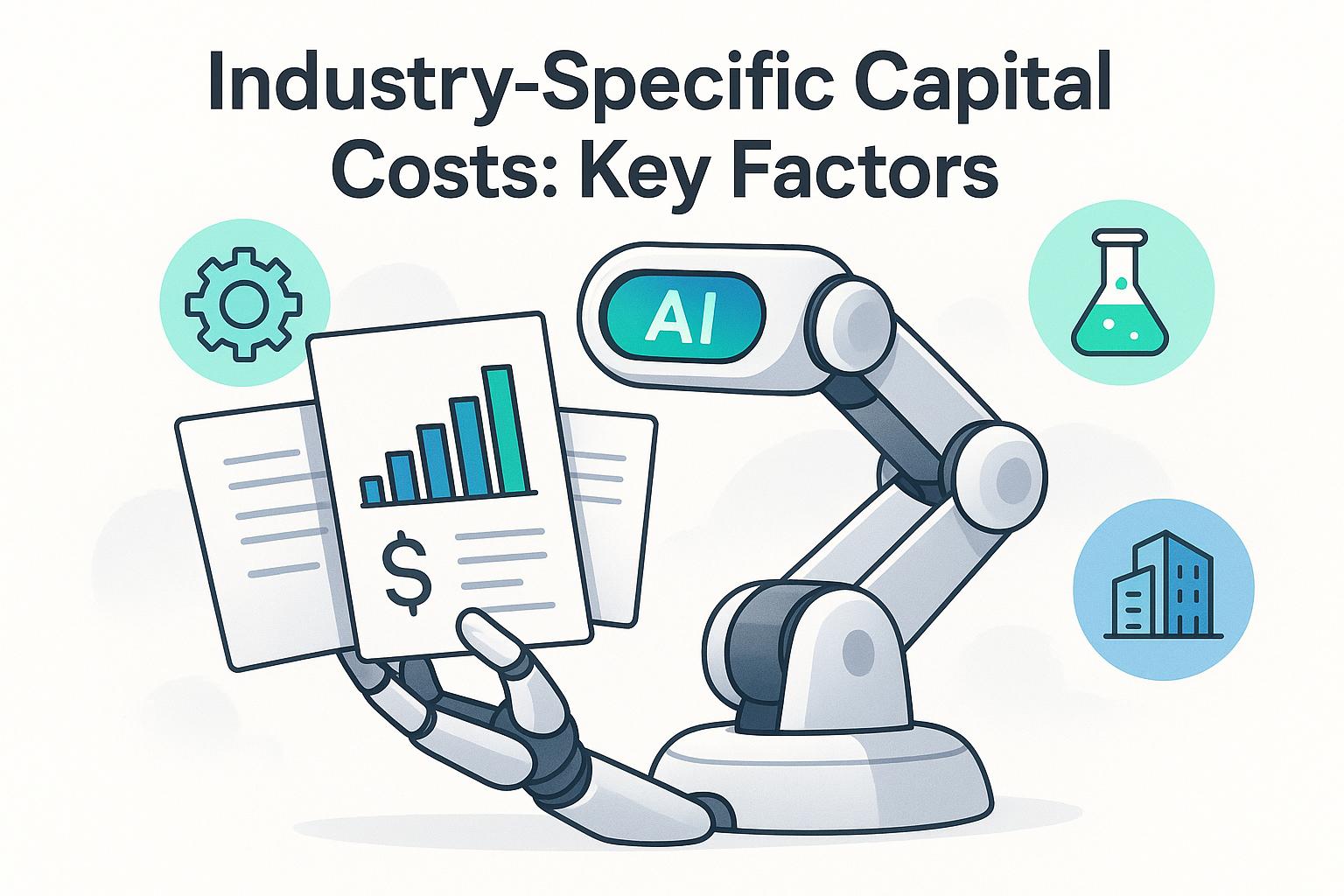33% of businesses make payroll errors, costing over $7 billion annually. AI-powered payroll systems can reduce these errors by up to 90%, cut processing time by 30%, and lower costs by 20-60%. Here's why switching to AI-based payroll tools is worth considering:
- Error Reduction: AI systems improve accuracy by 31%, compared to traditional methods.
- Faster Processing: Payroll cycles are completed in minutes instead of hours or days.
- Compliance: Real-time updates ensure adherence to changing tax codes and labor laws, reducing penalties.
- Scalability: Easily handles growth without adding administrative staff.
- Cost Savings: Automation reduces staffing needs and long-term operational costs.
- Security: Advanced encryption protects sensitive payroll data.
Quick Comparison:
| Aspect | Manual Systems | AI-Powered Systems |
|---|---|---|
| Processing Time | Hours to days | Minutes |
| Error Rate | 1–8% | <0.1% |
| Compliance Monitoring | Manual checks | Real-time automation |
| Cost Efficiency | High ongoing costs | Long-term savings |
| Scalability | Limited by staff | Easily scalable |
| Data Security | Basic protection | Advanced encryption |
Switching to AI-driven payroll tools can transform how businesses manage payroll, ensuring accuracy, efficiency, and compliance. Ready to learn more? Keep reading.
How AI Solves Payroll’s BIGGEST Challenges
1. Paper-Based and Manual Systems
Manual payroll systems are time-consuming and often riddled with errors.
According to earlier findings, manual payroll processing frequently requires multiple corrections per cycle, draining both time and money. The American Payroll Association estimates that error rates for manual systems typically fall between 1% and 8%.
Jonathan Goldsmith, GM Payroll at Remote, highlights the personal toll payroll errors can take:
"For most people, getting paid is an emotional thing. If they don't get paid correctly, or they don't get what they were expecting, they might miss a medical payment or something else that can affect them significantly. Businesses need to understand that payroll is really about the individual and their experience."
Manual systems also struggle to keep up with growth. The table below outlines the operational drawbacks of manual payroll compared to automated solutions:
| Aspect | Manual Impact | Business Consequence |
|---|---|---|
| Processing Time | Hours to days | Reduced productivity |
| Error Management | Up to 8% error rate | Increased liability risk |
| Data Security | Vulnerable to breaches | Higher security risks |
| Growth Capacity | Limited by staff | Scaling challenges |
While manual systems might seem cost-effective at first, their reliance on labor, frequent error corrections, physical storage needs, and potential fines (up to $10,000 under FLSA) can lead to steep long-term expenses. This is especially true as tax laws evolve and compliance requirements grow more complex.
Next, we’ll explore how AI-powered systems tackle these issues head-on.
2. AI-Powered Systems
Today's AI-powered payroll systems are reshaping how businesses handle payroll, offering faster and more accurate processes. By leveraging advanced technology, these systems simplify payroll documentation and ensure compliance with ever-changing regulations.
One standout benefit is their ability to significantly reduce errors. For example, AI systems have been shown to cut mistakes by 31%, compared to the average of 15 errors per period using traditional methods. This improvement not only enhances operational efficiency but also boosts employee satisfaction.
The impact of AI in payroll management can be seen across several key areas:
| Aspect | Traditional Methods | AI-Powered Solutions | Impact |
|---|---|---|---|
| Processing Time | Hours per cycle | Minutes per cycle | 30% reduction |
| Error Rate | Up to 15 per period | Reduced by 31% | Improved accuracy |
| Cost Efficiency | High administrative costs | 20–60% reduction in staffing | Better ROI |
| Compliance Monitoring | Manual periodic checks | Real-time automated scanning | Lower risk of penalties |
These advancements don't just save time and money - they also strengthen compliance. AI tools excel at keeping up with complex regulatory requirements by automatically monitoring updates to payroll laws and tax codes. This proactive approach helps businesses sidestep costly fines. For perspective, in 2023, the IRS issued over $8.5 billion in penalties for employment tax non-compliance.
Scalability is another major advantage of AI-powered systems. As companies grow, these tools can effortlessly handle increased data without requiring additional administrative staff. In fact, 74% of U.S. businesses now rely on cloud-based payroll software, according to Deloitte. Platforms like Lucid Financials integrate payroll data with broader financial planning, offering real-time insights and simplifying compliance.
Security is also a top priority. Modern AI systems detect anomalies and potential cybersecurity threats by analyzing payroll data patterns. For instance, in 2024, machine learning tools helped the U.S. Treasury recover $1 billion in check fraud by identifying suspicious transaction patterns before any significant losses occurred.
Pete Tiliakos, Analyst and Founder of GxT Advisors, highlights the transformative role of AI in payroll management:
"I've been seeing some data that says payroll was one of the top areas where it's going to change because of the use of generative A.I.... But it's not going to replace [payroll professionals]…it's going to replace the work that people are doing day-to-day manually."
AI-powered payroll systems are clearly more than just a convenience - they're a game-changer for businesses looking to streamline operations, improve accuracy, and stay ahead in a fast-evolving regulatory environment.
sbb-itb-17e8ec9
Benefits and Limitations
AI-powered payroll systems come with clear advantages, but it’s equally important to understand their limitations to make informed decisions. While these systems can streamline operations, they also require careful consideration of potential challenges.
| Aspect | Manual Systems | AI-Powered Solutions | Impact on Business |
|---|---|---|---|
| Processing Speed | Time-consuming processes | Processes payroll approximately 33% faster | Faster payroll cycles |
| Error Rate | Prone to human errors (1–8% error rate) | Up to 90% reduction in errors | Greater accuracy |
| Compliance Management | Requires manual updates | Real-time compliance monitoring | Fewer penalties |
| Data Security | Basic protection measures | Advanced encryption and security protocols | Stronger data protection |
| Cost Structure | Lower initial costs, higher ongoing expenses | Higher initial investment, long-term savings | Lower overall costs |
| Scalability | Limited by manual capacity | Easily scalable | Supports business growth |
The integration of AI into payroll systems offers businesses measurable benefits. For example, KPMG highlights that 55% of U.S. financial services companies now use AI in daily operations, signaling growing trust in these technologies. Additionally, the American Payroll Association estimates that automation can cut payroll processing costs by up to 80%.
Key Considerations
Data Security: AI systems rely on advanced encryption, strict access controls, and regular cybersecurity checks to safeguard sensitive information.
Implementation: Transitioning to an AI-powered system requires meticulous planning to ensure seamless integration with existing processes.
Oversight: Regular audits remain crucial to maintain accuracy and address any anomalies.
Cost: While AI can lead to long-term savings, the upfront costs are higher compared to manual systems.
Compliance: AI systems actively monitor regulations, which is especially critical considering that 33% of companies make payroll errors annually.
"Getting people paid requires nuanced judgment, empathy, and complex problem-solving. AI alone is not enough to handle such sensitive tasks without a human in the loop."
For successful implementation, businesses need to strike a balance between automation and human oversight. This involves setting clear policies, conducting regular audits, and providing targeted training. As payroll systems evolve, AI-driven solutions are poised to offer increasingly sophisticated ways to manage employee compensation.
Conclusion
Switching from manual to AI-driven payroll recordkeeping isn’t just about convenience - it’s about transforming efficiency, accuracy, and compliance. Organizations adopting these systems have seen error rates drop from 1–8% to under 0.1% and compliance issues reduced by 70%.
The financial benefits are just as compelling. Companies leveraging AI automation report:
- 20–30% lower operational costs
- 30–50% savings on bookkeeping labor costs
- 70% faster month-end closings
And these aren’t just numbers on paper. Real-world examples back them up. Patagonia cut payroll processing time by 40% with AI tools, while Unilever slashed payroll errors by 30% through similar implementations.
For businesses thinking about making the leap to AI-powered payroll, here are some essential factors to weigh:
- Integration Capabilities: Can the system work smoothly with your current accounting and HR platforms?
- Scalability: Will it adapt as your company grows?
- Security Features: Does it offer robust encryption and access controls?
- Compliance Updates: Does it automatically adjust to new regulations?
- Support Structure: Is there help available for setup and ongoing maintenance?
These considerations show how AI is reshaping payroll processes. As David Kim, Finance Manager at Skyline Enterprises, puts it:
"A structured payroll system ensures smooth operations, timely payments, and satisfied employees. It's the backbone of a strong workforce".
The future of payroll management is here, and it’s powered by AI. These systems not only handle complex calculations but also provide insights to help businesses grow. By adopting AI, companies can streamline payroll operations while enhancing accuracy, efficiency, and compliance.
FAQs
How do AI-powered payroll tools help businesses stay compliant with changing tax laws and labor regulations?
AI-powered payroll tools take the stress out of compliance by automatically monitoring and updating tax codes and labor laws as they change. This ensures that payroll calculations - like tax withholdings and overtime pay - are always accurate and in step with current legal standards, which helps avoid costly mistakes and penalties.
On top of that, AI can dig into historical payroll data to uncover patterns or flag potential compliance issues before they become problems. By handling these intricate tasks, these tools not only free up valuable time but also give businesses confidence that they're staying on the right side of the law.
What challenges might businesses encounter when switching from manual to AI-driven payroll systems?
Switching from manual to AI-driven payroll systems offers plenty of advantages, but the transition isn’t without its hurdles. One of the biggest concerns is data security. Payroll systems deal with highly sensitive employee information, making it crucial to protect against potential breaches or unauthorized access.
Another challenge lies in integrating AI tools with existing legacy systems. Sometimes, this process can create inefficiencies or even lead to isolated data pockets, making it harder for systems to communicate effectively.
Then there’s employee resistance to change. People who are used to traditional payroll methods might be reluctant to embrace new technology. Overcoming this often requires businesses to allocate time and resources for training, ensuring employees feel comfortable and confident using the new system.
Finally, initial implementation costs and staying on top of constantly evolving tax regulations can add layers of complexity to the process. But with careful planning, clear communication, and the right support, these challenges can be tackled successfully.
How do AI tools improve payroll data security compared to traditional methods?
AI tools bring a new level of security to payroll data by using advanced automation and real-time monitoring. Automating payroll tasks reduces the chance of human mistakes - often a major vulnerability in manual workflows. This not only helps ensure accurate calculations but also keeps tax compliance on track while protecting sensitive employee information.
On top of that, AI systems bolster security with features like encryption and anomaly detection. Encryption keeps data safe, while anomaly detection flags unusual patterns or discrepancies in payroll records, which could signal fraud or breaches. By catching these issues early, businesses can respond faster to potential threats, safeguarding confidential data and staying aligned with regulatory requirements.


